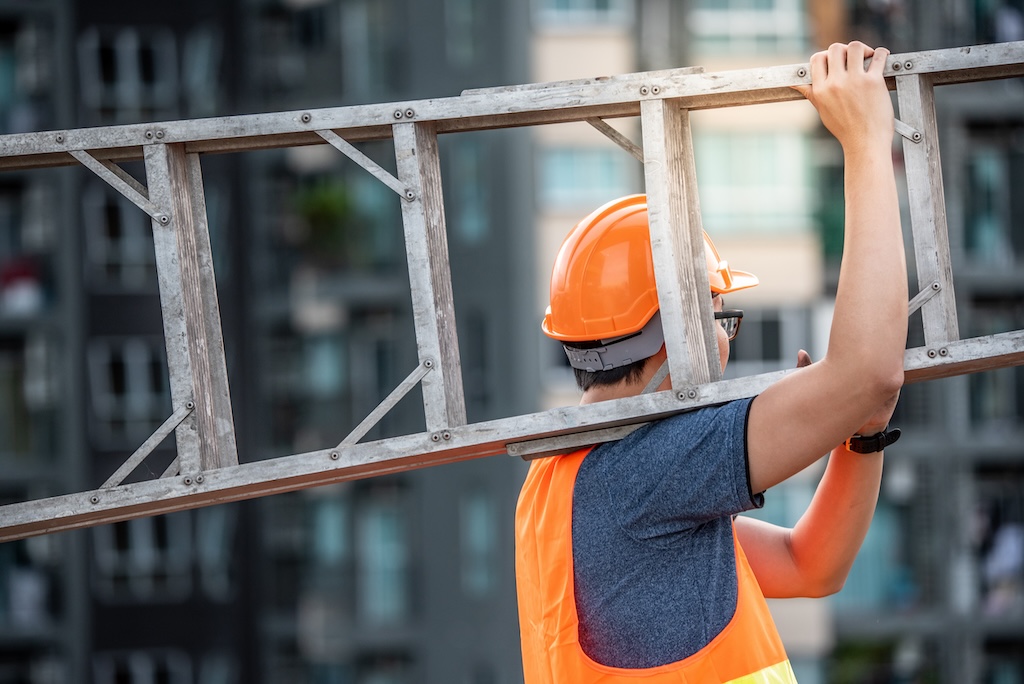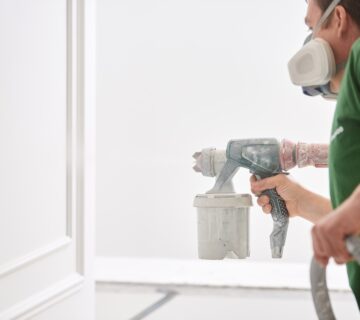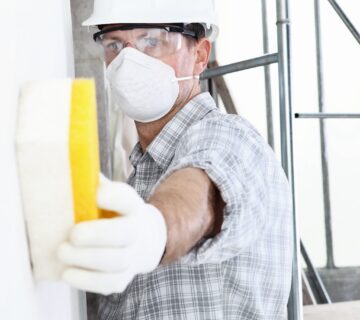House painting, whether it’s an interior or exterior project, can dramatically transform the look of your home. However, it’s crucial to remember that painting involves exposure to chemicals and poses potential risks that require adequate safety measures. This blog will discuss the essential safety equipment you need for house painting projects to ensure you stay protected while achieving that perfect finish. Wearing the right safety equipment can prevent accidents and long-term health issues.
Understanding the Risks
Exposure to Harmful Substances
Paints, especially oil-based varieties, can emit volatile organic compounds (VOCs) that are harmful if inhaled. Prolonged exposure to these fumes can lead to respiratory issues, dizziness, and other health problems. It’s also important to consider the long-term effects such as chronic respiratory conditions or even cancer. Therefore, mitigating these risks with proper ventilation and respiratory gear is essential.
Physical Hazards
Painting often involves working at heights or in awkward positions, which increases the risk of falls and strains. Drips and spills also create slip hazards. Proper footing and body positioning can reduce strain and prevent accidents. Awareness of your environment and careful planning of your workspace can also greatly diminish the likelihood of physical injury.
Essential Safety Equipment
Respiratory Protection
A good quality respirator is indispensable when dealing with paint fumes, especially in poorly ventilated spaces. Look for respirators with filters that are specifically designed for paint fumes. Disposable masks are sufficient for lower-VOC paints and shorter projects, but for more intensive work, a half-face respirator with replaceable cartridges is recommended. Ensuring a good fit is crucial to prevent exposure to harmful particles.
Eye Protection
Safety goggles or glasses are essential to protect your eyes from paint splatters and airborne particles, especially when sanding surfaces or using a sprayer. Opt for goggles that offer a secure fit and clear visibility. Glasses with side shields provide additional protection against debris. When choosing eye protection, make sure it’s compatible with other safety equipment like respirators.
Protective Clothing
Long-sleeved shirts and long pants made of thick material can protect your skin from paint and solvent splashes. For more extensive projects, consider disposable coveralls that offer full-body coverage. It’s also beneficial to use clothing that is easy to clean or dispose of after the job is complete. This can prevent the transfer of chemicals to other areas of your home or car.
Gloves
Wearing gloves can protect your hands from direct contact with paint and cleaning solvents. Disposable nitrile gloves are a good choice as they are resistant to many chemicals and provide a good grip. Ensure that the gloves fit well to maintain dexterity. Gloves also help to keep your hands clean, making cleanup after the project much easier.
Footwear
Proper footwear is important for safety and comfort. Shoes with non-slip soles are ideal to prevent slips on spilled paint or ladders. Ensure that your footwear is comfortable, especially if you’ll be standing for long periods. Closed-toe shoes also prevent injuries from falling objects or spills.
Additional Safety Gear
Ladder Safety
When painting at heights, a sturdy ladder or scaffolding is necessary. Ensure that ladders are stable and in good condition. For higher projects, harnesses and safety lines might be required. It’s also wise to have someone spot you when you’re working at significant heights.
Hearing Protection
If you’re using loud equipment like power sanders or airless paint sprayers, ear protection is advisable to prevent hearing damage. Earplugs or earmuffs can offer adequate protection from prolonged exposure to noise. The level of protection should be appropriate for the noise rating of the equipment you’re using. Consistent use of hearing protection can preserve your long-term ear health.
First Aid Kit
Always have a basic first aid kit nearby in case of minor injuries. The kit should include items like bandages, antiseptic wipes, and pain relievers. A well-stocked kit may also contain eyewash, in case paint or debris comes into contact with your eyes. Keeping a first aid kit within easy reach can ensure prompt treatment, preventing minor injuries from becoming more serious.
Final Thoughts
Safety should always be a top priority in any house painting project. By equipping yourself with the right safety gear, you can protect yourself from various health hazards and physical risks associated with painting. Remember, taking precautionary steps doesn’t just ensure your safety; it also contributes to the overall success and efficiency of your project. For more tips on safe and effective house painting, visit our website at sisupainting.com and check out our blog at sisupainting.com/blog.




No comment